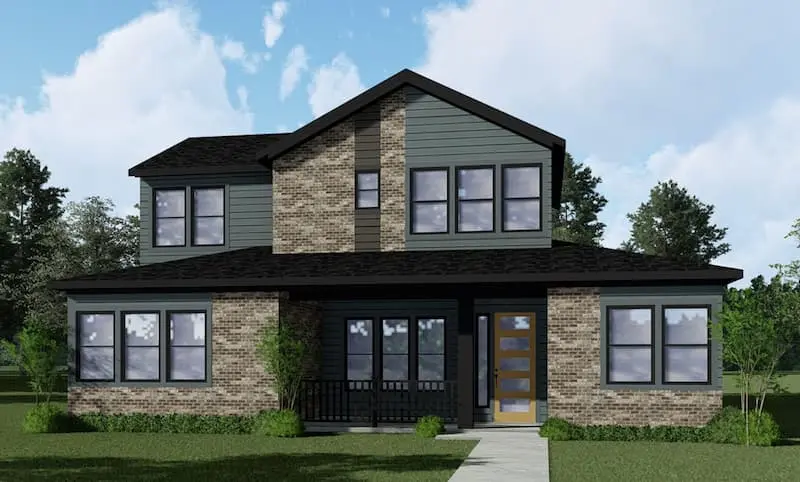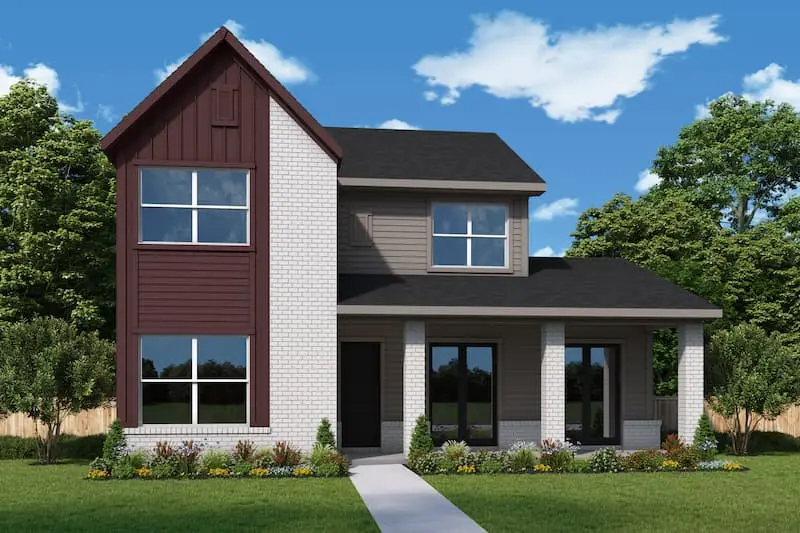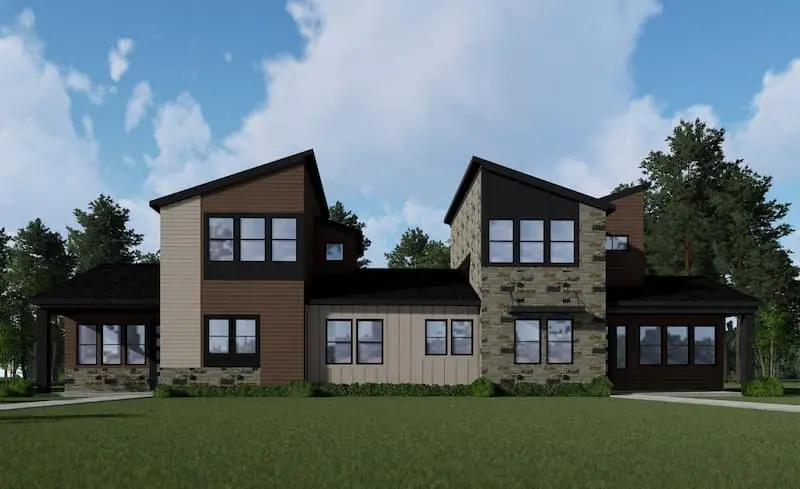Homebuyers seeking to put down roots in Texas are discovering a new masterplanned community with a strong focus on people, community, and building neighborly connections.
Indigo is based in Fort Bend County and broke ground on its first phase in early 2023. The neighborhood will be 235 acres and is surrounded by cities such as Richmond and Sugar Land. The centerpiece of the community is a working farm (42 acres of the development are devoted to agricultural needs). There’s also a 25-acre lake and a 12-acre mixed use town center.
Livabl spoke to Scott Snodgrass, founding partner of Meristem Communities, about the philosophy behind Indigo, its working farm, the importance of community, and the concept of urban living in the suburbs.
Can you expand upon Meristem’s philosophy of “creating places for people where humans are the focal point and the culture reflects the area’s diverse demographics, giving real voice and representation to people who may not typically have it”?
We dream of a place where cars, corporations and capital aren’t the primary stakeholders (humans are), but rather they are the tools we use to accomplish positive outcomes for people. This means prioritizing pedestrians over cars in most instances, building a retail program that provides ownership of real estate to small businesses rather than an extractive tenant/landlord relationship, and using creative financing mechanisms to avoid the commodification of real estate.
Not only is Fort Bend County one of the most racially diverse counties in the country, but foreign-born residents generate 38 percent of total business income, indicating an international and engaged small business climate. We wanted to make sure to recognize and understand the cultural differences that exist here and build a place where everyone can feel welcome.
Real estate has historically been used as a tool of oppression, building wealth for some, and excluding others. At Indigo, we wanted to do our part to break through these barriers and ensure access to housing for more of our neighbors. While we can’t solve all (or even most) of the real estate sector’s problems, we’re making strong progress toward a more equitable homebuying process.
What type of homebuyer would be best suited for Indigo and why?
Indigo welcomes all people. Houston’s suburbs have traditionally been populated with white, married-with-children, non-disabled couples of relative means. This wasn’t necessarily a result of preference, but rather of access. By developing the built environment (streets, parks, utilities, amenities, sidewalks, etc.) in a way that considers all different kinds of people, we believe Indigo will open up access to the kind of community that many wish to live in.
Can you tell us a bit more about the farm? Will homeowners be able to grow their own food? Will the food grown be used in the restaurants at Indigo Commons? Which types of livestock will be included, and how will they be incorporated into the farm’s function?
Indigo Farm is an amenity owned by the HOA and managed by Agmenity. Our full-time farmers will grow fruit and vegetables in our fields and manage egg production on our pastures.
Residents will be able to interact with the farm in myriad ways: attending on-farm events, volunteering, taking gardening classes, and even growing their own vegetables in one of our clubs.
These food products will be sold retail through The Filling Station (our general store), into restaurants (through Agmenity’s relationships with chefs), and donated to local non-profits.
Laying hens are the only livestock that we have determined will live at Indigo to date. Sheep are another option we are exploring. Livestock will rotate through our pastures, spending nearly all of their time on the grass and in the sunshine.
Tell us why you decided to go with an open-source model – what makes it “a treasure trove of knowledge and best practices”?
For both community and climate reasons, we fundamentally believe we need to pivot back to development patterns that were used before the car became so ubiquitous.
While we believe cars certainly have their place in neighborhoods, our communities have been designed with so much of a focus on the automobile that we’ve made walking unsafe and inconvenient. By designing our streets and trails safely and conveniently, and by bringing our retail and commercial close to our residential, we expect that our residents will walk for many of their daily needs.
If we believe these things, how could we keep our successes to ourselves? We believe sharing what we’ve learned from others is an obligation to our neighbors.
How is Indigo bringing “urban living” to the suburbs?
The contemporary suburban development framework has traditionally been one of large homes on cul-de-sacs and curvilinear or looping streets, with homes tucked to the interior of the block and retail/commercial land turning its back on the homes to face the street.
At Indigo, we have used the traditional street grid that makes so many of our favorite historic neighborhoods great and provides for a much more connected community. We’ve also designed a neighborhood of more reasonably sized homes on smaller lots and designated more of the land to common areas (more than 60 percent of Indigo is open space).
Then we made sure to connect the street grid to our mixed-use commercial area (Indigo Commons) and brought the retail, restaurant, and other commercial spaces in closer to the homes, facing towards them.
Why do you think homebuyers are interested in developments like Indigo?
In this market, I think affordability has become really critical for our neighbors. Our smaller homes and yards are certainly a tradeoff, but one that many are willing to make so that they can live within their desired community.
Also, our inclusive, community-oriented messaging has really resonated with a lot of folks. They want to live in a place that actually fosters community. Many of our prospective homebuyers live in brand-new communities in our area, and while they like their homes, they’re hungry for the neighborly connections they know they’re missing.
To learn more about Indigo, visit indigocommunity.com.









